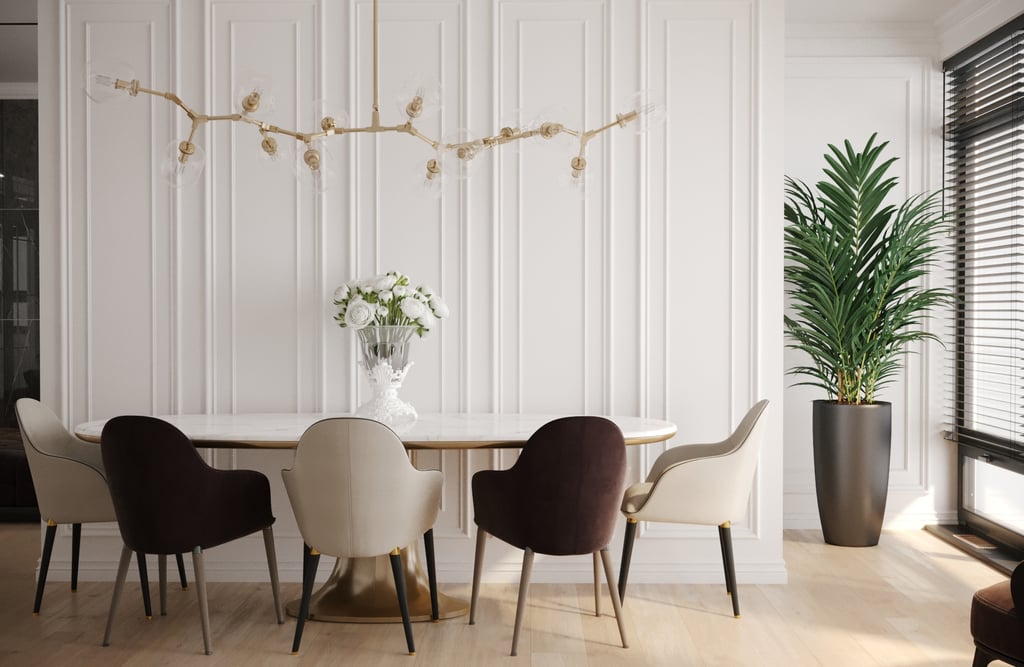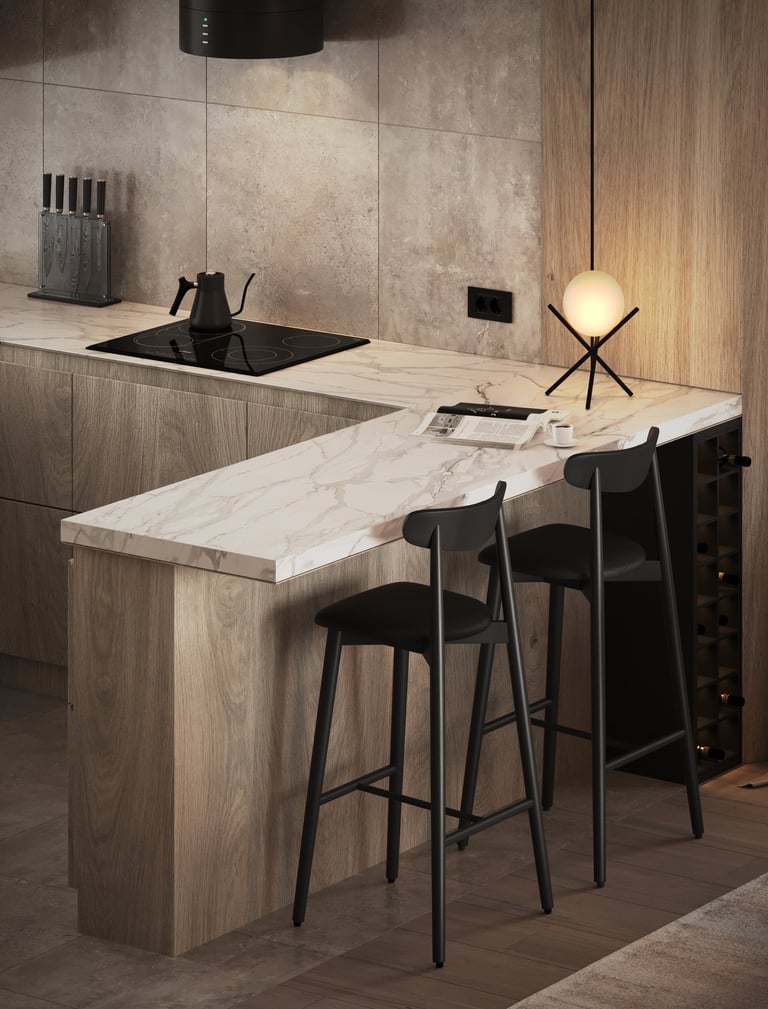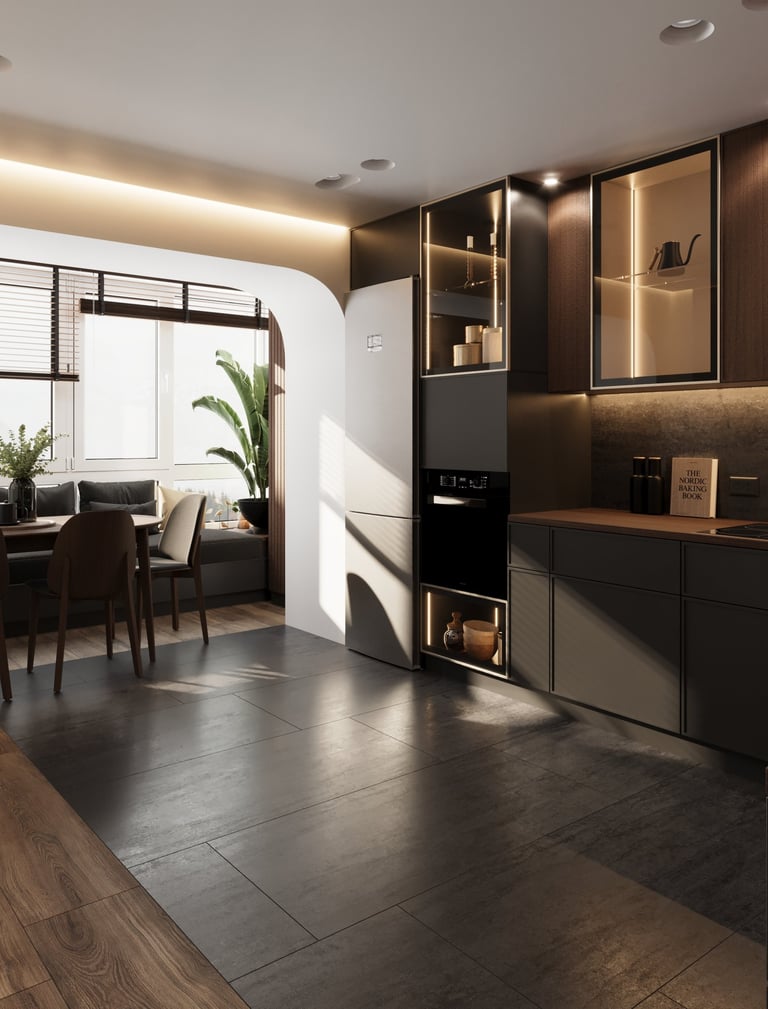What is 3D Interior Rendering? Advantages and Opportunities
Roman Marchyshak
8/14/20246 min read


If you’ve found yourself asking this question, you’re in the right place. Before diving into the specifics and advantages of interior 3D rendering, it's important to recognize that this technology offers a wealth of new possibilities. Interior visualization not only showcases all the intricate details of interior design but also has the power to transform ideas and dreams into reality. Additionally, 3D rendering simplifies the process of understanding a project. Clients no longer need to sift through complex specifications and drawings; they can effortlessly grasp the design through visual representation. Let’s explore how this works.
Key Takeaways:
Exploring 3D Interior Rendering
3D interior rendering is a cutting-edge digital visualization technique that creates lifelike three-dimensional models of interior spaces. This technology breathes life into architectural plans, enabling both clients and designers to see exactly how a room or space will look upon completion.
Enhancing Design Visualization and Decision-Making
One of the key benefits of 3D interior rendering is its ability to facilitate decision-making. By providing a realistic representation of the design, it allows clients and designers to experiment with various interior elements—such as furniture, color schemes, lighting, and materials—before implementation. This reduces the likelihood of costly post-construction modifications.
Boosting Client Communication
3D interior rendering greatly enhances communication between designers and clients. Unlike traditional blueprints, it offers a more tangible and comprehensible visualization of the design, helping clients better understand the proposal and provide informed feedback.
A Powerful Marketing and Advertising Tool
3D interior renderings are also invaluable as marketing and advertising tools. They create compelling visual content that can be used in real estate listings, property development brochures, or virtual property tours, attracting potential buyers and investors with their realistic portrayal of interior spaces.
Versatility Across Industries
Though predominantly used in architecture and interior design, 3D interior rendering also holds potential in industries like gaming, film, and virtual reality, where it can create lifelike environments and immersive experiences.
Cost-Effective and Time-Efficient
3D interior rendering is both cost-effective and time-saving. By identifying and resolving design issues during the pre-construction phase, it prevents expensive alterations during construction. Additionally, the technology allows for quick and easy adjustments, streamlining the design process.
3D Interior Rendering Explained
At its core, interior 3D rendering is a three-dimensional graphic representation that can serve as a substitute for photography. However, while photography captures what already exists, 3D rendering showcases what we envision. Over the past decade, this technology has evolved into one of the most popular methods for creating high-quality digital content.
3D visualization meticulously replicates colors, textures, shapes, and reflections of objects, even those within an unrealized interior. It allows you to evaluate how interior elements will appear under various lighting conditions—both artificial and natural—from multiple angles, and how well they complement each other.
When developing any interior design project, professionals increasingly rely on this efficient tool, which saves time and provides a detailed preview of the future space.
Stages of Interior Rendering
Interior rendering involves several key stages:
1. Building a 3D model of the room layout, including wall frames, partitions, and door and window openings.
2. Selecting construction and finishing materials, such as floor and wall coverings, textures, and colors.
3. Lighting installation to simulate the effects of natural and artificial light.
4. Arranging furniture within the completed space.
5. Adding decor, details, and accessories as the final touches to complete the design.
1. Prevention of Technical Errors
3D rendering allows designers to spot potential mistakes that might be overlooked in 2D drawings, such as improperly placed electrical outlets or insufficient space for appliances. Identifying these issues during the design phase prevents costly corrections later on, saving both time and money.
2. Visual Justification of Design Choices
Sometimes, clients struggle to grasp a designer's vision, or they may insist on a concept that the professional finds questionable. Interior renderings offer a clear visual of how different design solutions will turn out, helping designers justify their recommendations and maintain client trust.
3. Assisting in Design Decisions
When faced with an indecisive client, interior renderings can be a game-changer. By showcasing multiple design options—like whether to choose a combined kitchen-living area or separate rooms, or to opt for a minimalist or high-tech style—3D visualizations help clients clarify their preferences, speeding up the decision-making process and ensuring satisfaction with the final result.
4. Creating a Lasting Impression on Clients
Traditional drawings or mood boards might not fully convey the scope of a project. Photorealistic 3D renderings, on the other hand, allow clients to see their future home in vivid detail, helping them appreciate the full design concept and feel an emotional connection to the project.
5. Time Efficiency
Interior renderings streamline the design process by quickly conveying ideas to clients. Designers can easily show layouts, make adjustments, and finalize details without lengthy explanations, allowing for a smoother transition to project execution.
6. A Powerful Marketing Tool
A strong portfolio with high-quality images is essential for architects and designers looking to attract new clients. However, when projects are incomplete or photography isn't an option, 3D renderings can fill the gap. These visualizations not only showcase real projects but can also present conceptual ideas, helping professionals demonstrate their potential and reach new customers.
Benefits of 3D Interior Rendering
Extensive Furniture Selection and Arrangement
Interior rendering allows designers to experiment with various furniture options and arrangements before purchasing, ensuring a comfortable and well-planned layout from the start.
Realistic Representation
3D rendering captures the true volume of objects, lighting intensity, and shading, creating a highly realistic visualization of the interior.
Detailed Interior Visualization
Designers can present the future interior in incredible detail, down to the texture of carpets or the contents of cabinets, helping clients envision the space exactly as it will be.
Vast Material and Color Database
3D rendering software offers a wide range of materials and colors, making it easy to experiment with different design concepts and find the perfect combination.
Comparison of Multiple Design Concepts
3D renderings allow clients to compare different layout and design options, ensuring the final space aligns with their expectations.
Flexible Project Adjustments
Changes in style, materials, or furniture can be made easily during the visualization stage, allowing for endless revisions until the ideal result is achieved.
Quick Turnaround
Creating a 3D render of an interior can be done in as little as a day or two, with adjustments to colors, materials, and lighting made swiftly.
Immersive Experience
Interior renderings provide an almost real-life experience, allowing clients to immerse themselves in the space and make informed decisions on adjustments.
Advanced Lighting Simulation
3D rendering accurately depicts both natural and artificial lighting, showing how the space will look during different times of the day.
Style Selection
Clients unsure of their preferred style can use interior renderings to visualize different design styles in the same space, making it easier to decide on the best fit.
Clear Visualization of Final Results
Both clients and designers can see the final result even before construction begins, minimizing errors and ensuring a clear understanding of the project.
Minimization of Calculation Errors
3D rendering reduces the likelihood of mistakes in calculations, leading to a more accurate and efficient design process.
Enhanced Client-Designer Communication
By providing a clear, detailed visualization of the final design, 3D rendering fosters complete understanding and alignment between the client and the designer.
What is 3D Interior Rendering?


3D Rendering for Interior Design –
Top Reasons to Use:
Increase The Value of Your Interior Design Project. Take Advantage of 3D Rendering Services
3D visualization transcends mere presentation; it creates emotional connections. Professionally crafted interior renders can transport your clients to a festive Christmas scene, where they imagine decorating the tree with family, or to a serene bedroom with the first rays of summer sunlight heralding a new day. This immersive experience allows clients to envision their future life in the space, stirring emotions that drive decision-making.
Providing clients with modern, photorealistic 3D interior design renderings is a powerful way to enhance the value of your project. To achieve this, selecting the right 3D rendering company is crucial. You need a team that can accurately capture every element and detail of your design vision. The professionals you choose should be adept at translating your ideas into vivid, realistic representations.
Perspective Project offers top-notch interior 3D rendering services with a personalized approach at competitive prices. Our skilled team is dedicated to delivering stunning visualizations and providing expert advice on highlighting key features and choosing the best angles for your interior design. Engage your clients by helping them fully grasp the essence of your project. Explore our portfolio to see how we can bring your vision to life!
Final Thoughts
The unique potential of the modern method of 3D interior visualization and animation will allow you to look into the future and see how the apartment or office will look after the repair. You can examine in detail every element of the interior on the computer screen and choose the perfect color of finishing materials for walls and ceilings, and decide on the furniture style. The main advantage of 3D interior render is its realism and ability to try on different options for transforming the apartment or office as if the repair and construction work has already been carried out. This ensures you a flawless choice of lighting, purchase perfectly matching finishing materials, and cozy placement of all parts of the furniture set.
Today we have figured out what 3D interior rendering is and what are its main advantages. See for yourself. Order our 3D interior rendering services.


